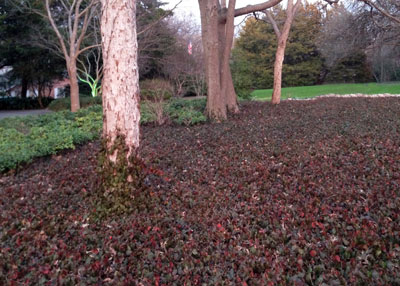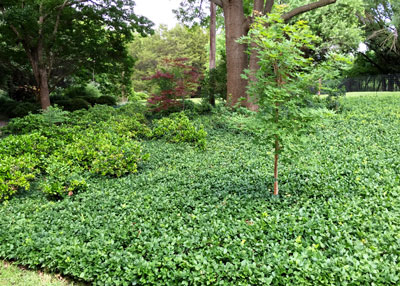From the Sperry Garden: June 2015

I had a house we had bought for my mom back in the late 1980s. I needed a groundcover to use alongside her drive. I bought two flats of something called purple wintercreeper euonymus and decided to give it a try.
But I needed only one of those flats for her landscape. I brought the other one home and set it down outside the door to my greenhouse. It got watered by the sprinklers, by my hose and by God, and none of those was especially regular. Yet it survived. And it grew.
In fact, it grew so well that three years later, when I decided to dismantle my greenhouse and replace it with what I now call my “Santa barn” (yep, another passion run amuck), I found that the wintercreeper (I use its nickname) had spread far beyond its original 4-inch pots. It had sprawled up and over the pot walls, rooting tightly into the ground. Why, it was covering probably 20 square feet. So I merely trimmed off the runners so I could remove the flat, the mother plants and their pots. That purple wintercreeper planting now covers probably 3,000 square feet beneath our pecan trees.
But wait! There’s more. I was so taken by its performance through neglect that I decided to open up two more large beds of it out near the road. One of those is the bed you see here, and it’s about seven years old.

I plant purple wintercreeper from 4-inch pots spaced checkerboard-style on 16- or 18-inch centers (depending on size of the plants). Despite the fact that those first plants grew in our native Texas clay soil, I do normal bed preparation whenever I plant it, incorporating a couple of inches of organic matter such as compost and pine bark mulch at the time of tilling.
You’ll have to pull weeds by hand the first summer you have wintercreeper in new beds. By the second season it will probably be thick enough to crowd most of them out. For the first couple of years you’ll have stems that crawl for a distance, then try to shoot straight up, as if looking for support. I sometimes weight those down so they’ll take root, or they can be cut with a line trimmer.
By the third spring the bed should be completely covered, and by the third or fourth summer, you’re likely to be pruning it with the line trimmer two or three times each season to keep it smooth and compact.
Mine gets the same treatment as my turfgrass in terms of water and fertilizer (all nitrogen). The only time I’ve ever seen euonymus scale on it was when it started climbing my tree trunks and posts, so I keep it trimmed off now and the problem is gone.
This is a nice groundcover that has served me well. I’m proud to tell you about one of the plants that make up the foundation of our entire landscape. I recommend it to you highly, no matter where in Texas you live.

